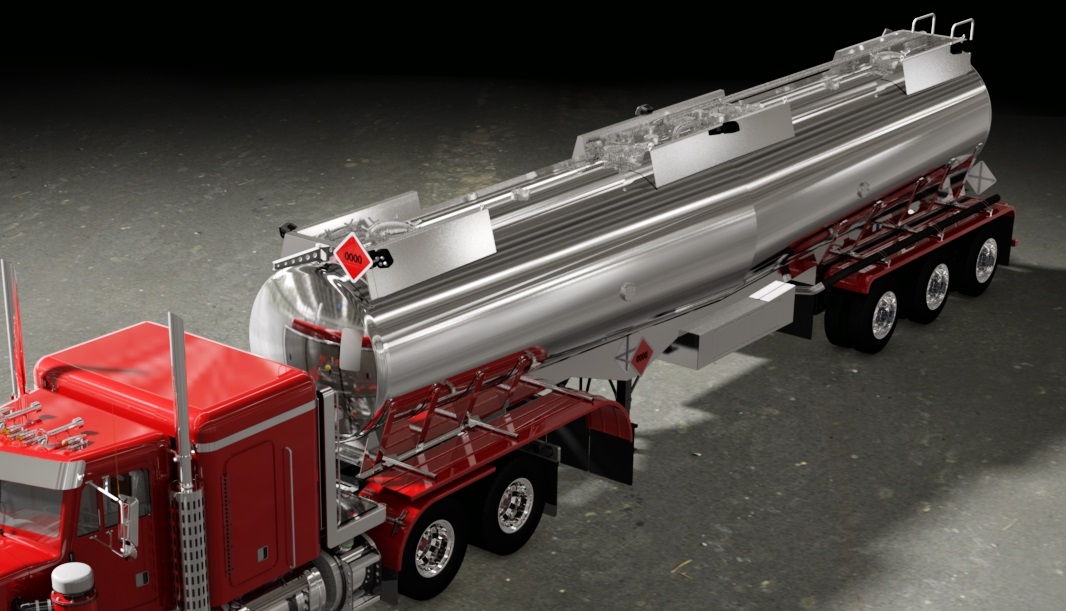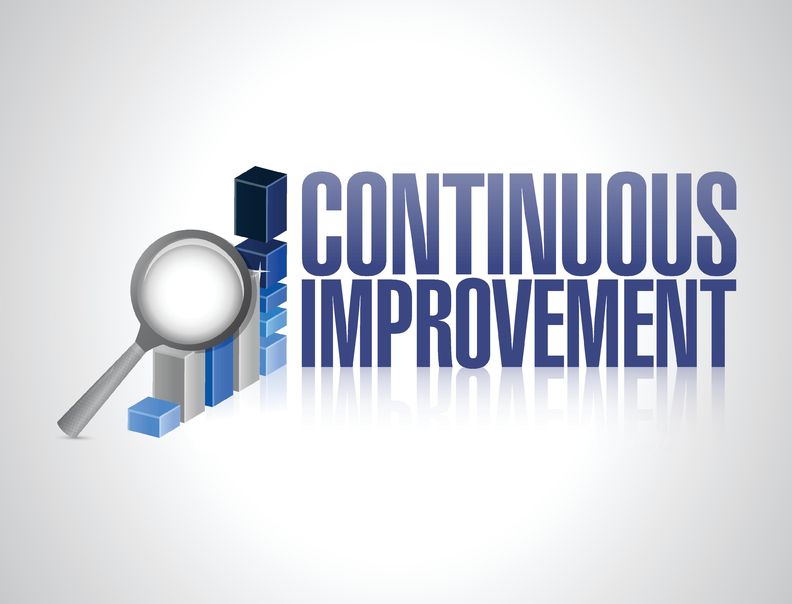GET LEAN IN 2015 – SIX TIPS TO SHAPE UP YOUR ORGANIZATION
Most of us are no strangers to New Year’s resolutions. At this time of year, we look back on the past, and resolve to make productive and healthy changes for ourselves for the New Year. The most common personal New Year’s resolutions are to lose weight, stop excess consumption, spend more time with family, get out of debt, help others and enjoy life more. However, how many people apply the same personal resolutions to their organization?
Just as we have personal improvements we want or need to make, so do many organizations. By applying Lean principles, you can shape up your organization while working on those personal improvements.
 Improve your culture: In Lean, there are two main pillars. The first is Continuous Improvement. The second is Respect for People. Most Lean projects focus on Continuous Improvement, but this will not truly happen without a focus on people; your customers, your suppliers, and most importantly, your staff.
Improve your culture: In Lean, there are two main pillars. The first is Continuous Improvement. The second is Respect for People. Most Lean projects focus on Continuous Improvement, but this will not truly happen without a focus on people; your customers, your suppliers, and most importantly, your staff.

In order for Continuous Improvement to work, you need to create an atmosphere of continuous learning, where people are given the ability and freedom to challenge the status quo, and even encouraged to do so.
In 2015, encourage your staff to make suggestions on how to improve their work on a regular basis. This could be anything from getting another hand tool so there is one at each workbench, or providing training on the scheduling software to improve its use. The most important part though, is to actually implement some of the suggestions.
 Lose some “weight”: Organizations that have not implemented Lean may not recognize or be able to quantify how much waste they have in their system. You may be surprised to find as little as 10% of your organization’s time is actually spent on value-added activities.
Lose some “weight”: Organizations that have not implemented Lean may not recognize or be able to quantify how much waste they have in their system. You may be surprised to find as little as 10% of your organization’s time is actually spent on value-added activities.
Pick a process in your organization and look for one of the eight wastes. Once you have identified a waste, brainstorm ideas with your staff on how that waste can be reduced. Here are some questions you can ask:
- Do you have material handling equipment moving pallets of parts between workstations?
- Is there a lot of work-in-progress?
- Do staff members have the tools they need when they need them?
- Is equipment sitting idle?
- Are four different signatures required on an order?
- Do you create reports that no one actually reads?
- Do staff members spend time fixing errors that others have made?
- Are skilled staff members being used to their full potential?
Be mo re “takt”-ful: Takt time is a common term in Lean. It is the pace at which production needs to work to keep up with customer demand. By examining your customer demand, you can determine your organization’s takt time then work to balance the w
re “takt”-ful: Takt time is a common term in Lean. It is the pace at which production needs to work to keep up with customer demand. By examining your customer demand, you can determine your organization’s takt time then work to balance the w ork so each step in the process is close to takt. This, in combination with waste elimination, will reduce the lead time of your process. Full Lean implementation can result in a 25 to 50% reduction in lead-time, which ultimately increases your customer responsiveness.
ork so each step in the process is close to takt. This, in combination with waste elimination, will reduce the lead time of your process. Full Lean implementation can result in a 25 to 50% reduction in lead-time, which ultimately increases your customer responsiveness.
 Don’t make the same mistakes: Everyone knows the saying “learn from your mistakes,” but we often don’t do this in our organizations. Many times, if a defect is found in a product, or a mistake is made in shipping, the problem is corrected and everyone moves on. Next time, rather than re-soldering that part (for example), challenge yourself and your team to examine the cause for the faulty solder. Was the flux missed? Is the soldering iron too small or not properly cleaned? Is appropriate training in place? You can use tools like “5 Whys” and fishbone diagrams to really dig into the root cause of the problem. By doing so, you can work on preventing the same mistake from happening again rather than just applying a Band-Aid.
Don’t make the same mistakes: Everyone knows the saying “learn from your mistakes,” but we often don’t do this in our organizations. Many times, if a defect is found in a product, or a mistake is made in shipping, the problem is corrected and everyone moves on. Next time, rather than re-soldering that part (for example), challenge yourself and your team to examine the cause for the faulty solder. Was the flux missed? Is the soldering iron too small or not properly cleaned? Is appropriate training in place? You can use tools like “5 Whys” and fishbone diagrams to really dig into the root cause of the problem. By doing so, you can work on preventing the same mistake from happening again rather than just applying a Band-Aid.
 Drive less: Material handling equipment and inventory racking are an important part of many operations. However, once material is moved onto the assembly or manufacturing floor, the focus of Lean is to provide each workstation with the supplies they need as they need them. This often means moving raw material, parts and work-in-progress between workstations in smaller batches, and therefore on a cart instead of with the forklift. When Lean is fully implemented in a manufacturing organization, the company can expect material handling savings on the order of 25 to 50%.
Drive less: Material handling equipment and inventory racking are an important part of many operations. However, once material is moved onto the assembly or manufacturing floor, the focus of Lean is to provide each workstation with the supplies they need as they need them. This often means moving raw material, parts and work-in-progress between workstations in smaller batches, and therefore on a cart instead of with the forklift. When Lean is fully implemented in a manufacturing organization, the company can expect material handling savings on the order of 25 to 50%.
 Clear the clutter: Are there items in your workspace that you have never used? This can happen on the shop floor with tools or manuals for equipment that has long been discarded, as well as in offices with out-dated procedures, or keeping around that broken chair that might one day get fixed. You will find many things that are being kept “just in case.” The New Year is a perfect time to conduct a “red-tagging” exercise. Go through your workspace and place a red-tag on anything that you haven’t used or opened in one year. Once complete, place all of the red-tagged items in a designated space. If no one claims them in 90 days, they will be discarded or donated – just in time for “spring cleaning.”
Clear the clutter: Are there items in your workspace that you have never used? This can happen on the shop floor with tools or manuals for equipment that has long been discarded, as well as in offices with out-dated procedures, or keeping around that broken chair that might one day get fixed. You will find many things that are being kept “just in case.” The New Year is a perfect time to conduct a “red-tagging” exercise. Go through your workspace and place a red-tag on anything that you haven’t used or opened in one year. Once complete, place all of the red-tagged items in a designated space. If no one claims them in 90 days, they will be discarded or donated – just in time for “spring cleaning.”
Just like cutting out that second cookie as part of your healthy eating New Year’s resolution, a simple modification in your organization can lead to vast differences to your productivity and bottom line. So, while you’re making your personal resolutions list this holiday season, don’t forget you can also improve your organization by going Lean in 2015.
If you’d like more information on how your organization can be more Lean in 2015, the ProSolve team is here to help. One of our consultants would be happy to provide you with some additional information. Contact us via email info@prosolve.ca, or phone us at 780.414.1895.






 Improve your culture: In Lean, there are two main pillars. The first is Continuous Improvement. The second is Respect for People. Most Lean projects focus on Continuous Improvement, but this will not truly happen without a focus on people; your customers, your suppliers, and most importantly, your staff.
Improve your culture: In Lean, there are two main pillars. The first is Continuous Improvement. The second is Respect for People. Most Lean projects focus on Continuous Improvement, but this will not truly happen without a focus on people; your customers, your suppliers, and most importantly, your staff.
 Lose some “weight”: Organizations that have not implemented Lean may not recognize or be able to quantify how much waste they have in their system. You may be surprised to find as little as 10% of your organization’s time is actually spent on value-added activities.
Lose some “weight”: Organizations that have not implemented Lean may not recognize or be able to quantify how much waste they have in their system. You may be surprised to find as little as 10% of your organization’s time is actually spent on value-added activities. re “takt”-ful: Takt time is a common term in Lean. It is the pace at which production needs to work to keep up with customer demand. By examining your customer demand, you can determine your organization’s takt time then work to balance the w
re “takt”-ful: Takt time is a common term in Lean. It is the pace at which production needs to work to keep up with customer demand. By examining your customer demand, you can determine your organization’s takt time then work to balance the w ork so each step in the process is close to takt. This, in combination with waste elimination, will reduce the lead time of your process. Full Lean implementation can result in a 25 to 50% reduction in lead-time, which ultimately increases your customer responsiveness.
ork so each step in the process is close to takt. This, in combination with waste elimination, will reduce the lead time of your process. Full Lean implementation can result in a 25 to 50% reduction in lead-time, which ultimately increases your customer responsiveness.  Don’t make the same mistakes: Everyone knows the saying “learn from your mistakes,” but we often don’t do this in our organizations. Many times, if a defect is found in a product, or a mistake is made in shipping, the problem is corrected and everyone moves on. Next time, rather than re-soldering that part (for example), challenge yourself and your team to examine the cause for the faulty solder. Was the flux missed? Is the soldering iron too small or not properly cleaned? Is appropriate training in place? You can use tools like “5 Whys” and fishbone diagrams to really dig into the root cause of the problem. By doing so, you can work on preventing the same mistake from happening again rather than just applying a Band-Aid.
Don’t make the same mistakes: Everyone knows the saying “learn from your mistakes,” but we often don’t do this in our organizations. Many times, if a defect is found in a product, or a mistake is made in shipping, the problem is corrected and everyone moves on. Next time, rather than re-soldering that part (for example), challenge yourself and your team to examine the cause for the faulty solder. Was the flux missed? Is the soldering iron too small or not properly cleaned? Is appropriate training in place? You can use tools like “5 Whys” and fishbone diagrams to really dig into the root cause of the problem. By doing so, you can work on preventing the same mistake from happening again rather than just applying a Band-Aid.  Drive less: Material handling equipment and inventory racking are an important part of many operations. However, once material is moved onto the assembly or manufacturing floor, the focus of Lean is to provide each workstation with the supplies they need as they need them. This often means moving raw material, parts and work-in-progress between workstations in smaller batches, and therefore on a cart instead of with the forklift. When Lean is fully implemented in a manufacturing organization, the company can expect material handling savings on the order of 25 to 50%.
Drive less: Material handling equipment and inventory racking are an important part of many operations. However, once material is moved onto the assembly or manufacturing floor, the focus of Lean is to provide each workstation with the supplies they need as they need them. This often means moving raw material, parts and work-in-progress between workstations in smaller batches, and therefore on a cart instead of with the forklift. When Lean is fully implemented in a manufacturing organization, the company can expect material handling savings on the order of 25 to 50%.  Clear the clutter: Are there items in your workspace that you have never used? This can happen on the shop floor with tools or manuals for equipment that has long been discarded, as well as in offices with out-dated procedures, or keeping around that broken chair that might one day get fixed. You will find many things that are being kept “just in case.” The New Year is a perfect time to conduct a “red-tagging” exercise. Go through your workspace and place a red-tag on anything that you haven’t used or opened in one year. Once complete, place all of the red-tagged items in a designated space. If no one claims them in 90 days, they will be discarded or donated – just in time for “spring cleaning.”
Clear the clutter: Are there items in your workspace that you have never used? This can happen on the shop floor with tools or manuals for equipment that has long been discarded, as well as in offices with out-dated procedures, or keeping around that broken chair that might one day get fixed. You will find many things that are being kept “just in case.” The New Year is a perfect time to conduct a “red-tagging” exercise. Go through your workspace and place a red-tag on anything that you haven’t used or opened in one year. Once complete, place all of the red-tagged items in a designated space. If no one claims them in 90 days, they will be discarded or donated – just in time for “spring cleaning.”